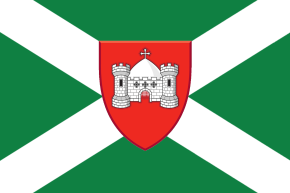Limerick
| ||||||||||||||||||||||||||||||
The Limerick Republic, a region steeped in history and tradition, is currently navigating a complex path towards autonomy from the Kingdom of Corcaigh. The quest for self-governance is rooted in a desire for local representation, a distinct cultural identity, and the ability to shape its own destiny.
Information
Historically, the Limerick Republic has been an integral part of the Kingdom of Corcaigh, contributing economically and culturally to the broader entity. However, a growing sense of regional identity has fueled aspirations for more autonomy. Advocates for independence emphasize the unique characteristics of the Limerick Republic, its economic contributions, and the need for policies tailored to its specific needs.
The call for freedom is not merely a political movement; it resonates with the cultural fabric of the region. Local customs, traditions, and a distinct way of life have become rallying points for those seeking self-determination. The people of the Limerick Republic aspire to govern themselves in a manner that aligns with their values and aspirations.
The journey towards independence is marked by diplomatic negotiations, legal discussions, and a fervent public discourse. The region is actively engaging in dialogues to articulate its case for autonomy, drawing attention to economic disparities, cultural nuances, and the desire for a governance structure that better reflects the will of its people.
The pursuit of freedom is not an endeavor to sever ties completely but rather an effort to redefine the relationship with the Kingdom of Corcaigh, fostering a more equitable and representative form of governance for the Limerick Republic. The unfolding narrative reflects the region's commitment to shaping its own destiny and preserving its unique identity within the broader Irish landscape.
Military
The Limerick People's Army (LPA) stands as a symbol of the fervent determination of the Limerick Republic to forge its own destiny, free from the perceived constraints imposed by the Celtic Union and the might of the Corkonian Army. The LPA is not merely a military entity; it embodies the collective will of the people, a diverse coalition of locals, former military personnel, and passionate activists who have united under a common cause—the establishment of sovereignty for the Limerick Republic.
This movement for autonomy is deeply rooted in the historical and cultural fabric of the region. The Limerick Republic, with its medieval charm and economic prowess, has long contributed to the broader Irish landscape. However, a growing sentiment has taken root, asserting that the region's distinct identity and unique needs are not adequately represented within the current political framework.
The LPA's struggle against the Celtic Union and the Corkonian Army is multifaceted. Diplomatically, the LPA has engaged in negotiations, advocating for recognition of its right to self-governance. Concurrently, grassroots mobilization efforts have galvanized the local populace, fostering a sense of unity and resilience against external pressures.
At times, the conflict has escalated into more assertive forms of resistance, with the LPA employing strategic military maneuvers to secure territorial control and defend the vision of an independent Limerick Republic. The clash represents not only a physical confrontation but a battle for the preservation of the region's cultural heritage, economic interests, and the right to shape its own future.
The geopolitical landscape is complex, with the LPA confronting challenges from not only the Corkonian Army but also navigating the intricate relationships within the broader Celtic Union. The struggle is dynamic, with each move on the metaphorical chessboard influencing the trajectory of the conflict.
The narrative unfolding in the Limerick Republic is one of resilience, determination, and an unwavering commitment to autonomy. The LPA's quest is not merely a fight against external forces; it is a profound endeavor to redefine the region's place within the broader Irish context, asserting the right to govern itself and shape a future that reflects the aspirations and values of the people of the Limerick Republic.
